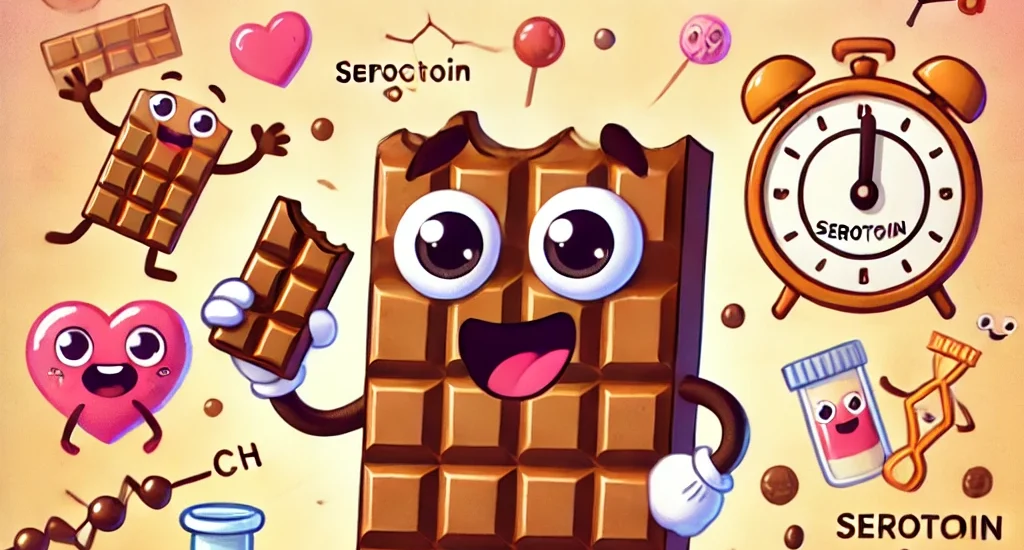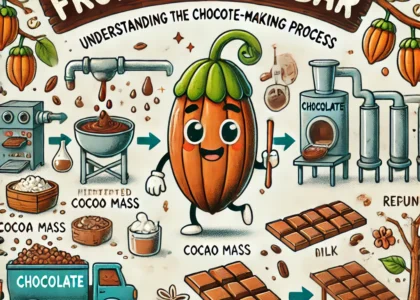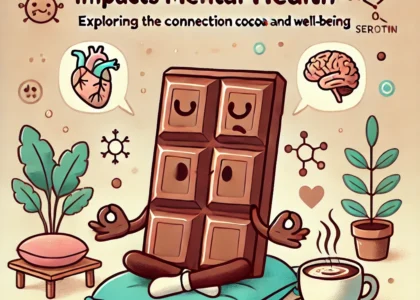Introduction
You unwrap a bar of chocolate, take a bite—and suddenly, you feel better. Your mood lifts, stress melts away, and you crave just one more square. Chocolate cravings are universal, and they’re not just about taste. There’s real science behind our deep-rooted love for chocolate.
This article explores the biology, psychology, and chemistry of chocolate cravings. From neurotransmitters to emotional triggers, we’ll uncover why chocolate holds such powerful sway over our senses—and whether our craving is rooted in addiction, nutrition, or pure pleasure.
1. What Is a Food Craving?
A craving is an intense, often uncontrollable desire for a specific food. Unlike general hunger, cravings are usually for something highly palatable, sweet, or salty. Chocolate consistently ranks among the most craved foods worldwide—especially among women.
Common Triggers for Cravings:
- Emotional states (stress, sadness, boredom)
- Hormonal changes (e.g. PMS)
- Sensory cues (smell, sight)
- Nutrient deficiencies
2. The Chemical Makeup of Chocolate
Chocolate contains several bioactive compounds that interact with the brain:
- Theobromine: A mild stimulant similar to caffeine, it can increase alertness and mood.
- Phenylethylamine (PEA): Known as the “love chemical,” PEA promotes feelings of attraction and euphoria.
- Anandamide: A fatty acid neurotransmitter that binds to cannabinoid receptors in the brain, producing a mild high.
- Caffeine: Found in small amounts, it adds to chocolate’s stimulating effect.
- Tryptophan: A precursor to serotonin, which regulates mood and emotion.
These compounds may explain why chocolate gives us a lift—and why we keep reaching for more.
3. Chocolate and the Brain’s Reward System
Chocolate stimulates the dopaminergic reward pathway, the same part of the brain activated by pleasurable experiences like love, laughter, or even certain drugs.
- Dopamine release creates a sense of pleasure and reinforces the behavior.
- Over time, this conditioning may strengthen our association between chocolate and comfort, making cravings harder to resist.
Research using brain imaging (fMRI) has shown that thinking about or eating chocolate lights up reward-related areas, especially in habitual chocolate lovers.
4. Is Chocolate Addictive?
Chocolate is not classified as physically addictive in the clinical sense, but it does have properties that mimic addiction-like behaviors:
- Repetitive cravings
- Loss of control
- Emotional reliance
Sugar and fat in chocolate contribute to its addictive nature. These ingredients can stimulate the release of opioid-like compounds in the brain, which produce feelings of pleasure and comfort.
5. Psychological and Emotional Drivers
Beyond the chemistry, cravings are often rooted in emotion and habit:
- Comfort eating: Chocolate is frequently used as a coping mechanism for stress or sadness.
- Cultural associations: Media, holidays, and childhood memories reinforce chocolate as a “reward” or celebration food.
- PMS and hormonal changes: Research shows a spike in chocolate cravings during menstruation, possibly due to mood fluctuations and changing serotonin levels.
These patterns create a feedback loop: the more you associate chocolate with relief or reward, the more likely you are to crave it in similar situations.
6. Gender Differences in Chocolate Cravings
Studies suggest women experience more frequent and intense chocolate cravings than men.
- One theory attributes this to hormonal fluctuations, particularly in estrogen and progesterone.
- Cultural influences may also play a role—chocolate is often marketed more aggressively toward women, particularly around emotional indulgence.
7. Can Nutrient Deficiencies Cause Chocolate Cravings?
Some believe that cravings signal deficiencies, especially in magnesium—a mineral that supports muscle and nerve function, often found in dark chocolate.
- While chocolate does contain magnesium, the amount is relatively small.
- It’s more likely that the craving is linked to emotional or sensory satisfaction than nutrient needs.
Still, some nutritionists recommend increasing magnesium intake (from leafy greens or nuts) if chocolate cravings are constant.
8. The Role of Texture and Mouthfeel
Chocolate’s appeal also lies in its texture:
- Melts at body temperature, giving it a smooth, luxurious mouthfeel.
- Releases aromatic compounds as it melts, enhancing flavor perception.
- Triggers pleasurable sensations via the trigeminal nerve (responsible for oral touch).
This sensory richness contributes heavily to its addictive appeal.
9. Managing Chocolate Cravings in a Healthy Way
Craving chocolate isn’t inherently bad—it’s about balance.
Tips to manage chocolate cravings:
- Choose dark chocolate (70%+) for higher cocoa and less sugar.
- Practice mindful eating: Savor each bite to satisfy with smaller portions.
- Pair with protein or fiber to reduce blood sugar spikes.
- Address emotional needs: Stress management, sleep, and hydration can help reduce unnecessary cravings.
- Avoid deprivation: Restrictive diets often increase cravings. A small, regular indulgence can prevent bingeing.
10. Is There a “Healthier” Way to Crave?
If you crave chocolate often, consider alternatives that still satisfy your senses:
- Raw cacao nibs: Less processed and higher in antioxidants.
- Hot cocoa made with unsweetened cocoa powder and a natural sweetener.
- Chocolate protein smoothies or bars with added fiber.
These options provide the taste and experience without excessive sugar and fat.
Conclusion
Chocolate cravings are rooted in a complex interplay of biology, brain chemistry, emotion, and culture. While not addictive in a medical sense, chocolate’s powerful sensory and emotional associations make it one of the most sought-after comfort foods in the world.
Understanding why we crave chocolate allows us to enjoy it more mindfully, indulge without guilt, and even harness its benefits for mood and pleasure—one square at a time.





